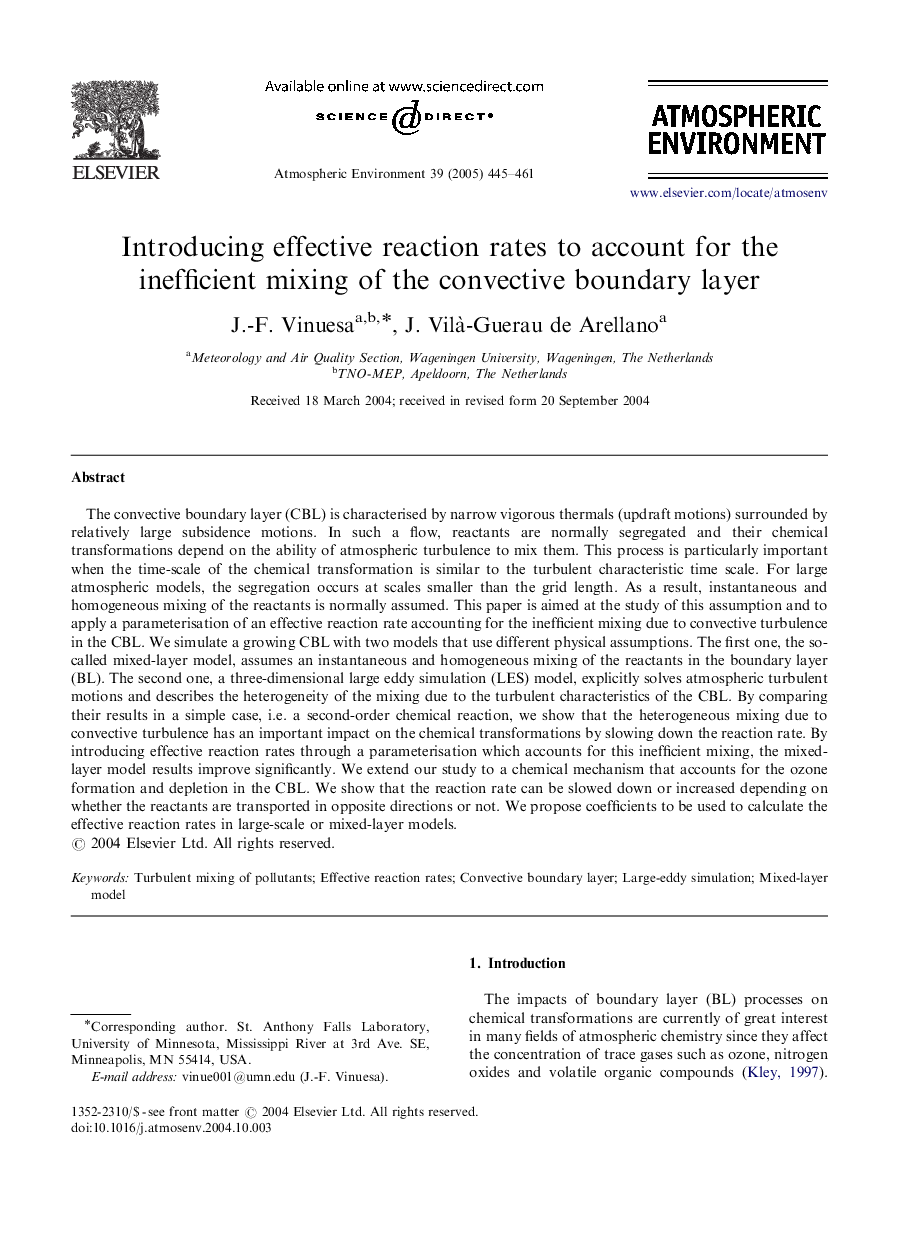| Article ID | Journal | Published Year | Pages | File Type |
|---|---|---|---|---|
| 9458766 | Atmospheric Environment | 2005 | 17 Pages |
Abstract
The convective boundary layer (CBL) is characterised by narrow vigorous thermals (updraft motions) surrounded by relatively large subsidence motions. In such a flow, reactants are normally segregated and their chemical transformations depend on the ability of atmospheric turbulence to mix them. This process is particularly important when the time-scale of the chemical transformation is similar to the turbulent characteristic time scale. For large atmospheric models, the segregation occurs at scales smaller than the grid length. As a result, instantaneous and homogeneous mixing of the reactants is normally assumed. This paper is aimed at the study of this assumption and to apply a parameterisation of an effective reaction rate accounting for the inefficient mixing due to convective turbulence in the CBL. We simulate a growing CBL with two models that use different physical assumptions. The first one, the so-called mixed-layer model, assumes an instantaneous and homogeneous mixing of the reactants in the boundary layer (BL). The second one, a three-dimensional large eddy simulation (LES) model, explicitly solves atmospheric turbulent motions and describes the heterogeneity of the mixing due to the turbulent characteristics of the CBL. By comparing their results in a simple case, i.e. a second-order chemical reaction, we show that the heterogeneous mixing due to convective turbulence has an important impact on the chemical transformations by slowing down the reaction rate. By introducing effective reaction rates through a parameterisation which accounts for this inefficient mixing, the mixed-layer model results improve significantly. We extend our study to a chemical mechanism that accounts for the ozone formation and depletion in the CBL. We show that the reaction rate can be slowed down or increased depending on whether the reactants are transported in opposite directions or not. We propose coefficients to be used to calculate the effective reaction rates in large-scale or mixed-layer models.
Related Topics
Physical Sciences and Engineering
Earth and Planetary Sciences
Atmospheric Science
Authors
J.-F. Vinuesa, J. Vilà -Guerau de Arellano,
